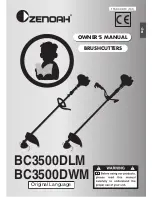
26
The cutting force ranges from 1 to 200 on the force scale. The maximum of 200 represents the 1500g of
cutting force on an ACS-24UHF. To change the force (
F
)
, use the left and right “+” and “-“ buttons, while in
Online mode. You cannot change settings from the
Cut Project With
window in MTC.
Dull blades will need more force than new blades, thus anticipate needing higher force over the course of
the life of the blade.
When cutting materials that can use either blade, the 45 degree blade needs more force than the 60 degree
blade, because of the extra contact with the material being cut.
Materials that absorb moisture (such as cardstock, paper, fabric, and chipboard) will need more force (and
possibly more than one pass) if they have been exposed to humidity. One tip is to blow dry these materials
before cutting.
The following are approximate force settings for a range of materials. Again, remember to use the
Test
button on the machine to cut small rectangles to verify the pressure setting and your blade length are
sufficient for the cut. Also remember to remove the test cut and observe the mat for any cut lines. Decrease
the blade exposure, as needed, to prevent unnecessary cutting into the mat.
o
For vinyl, set the pressure setting to around 30
– 40. Cheaper vinyl, such as cling vinyl, may require a
slightly higher pressure. Iron-on transfer will need a force of around 60
– 70.
o
For computer paper and foil, set the pressure setting to around 30
– 50.
o
For vellum and heavier paper, like the more expensive patterned papers used in scrapbooking, set the
pressure setting to around 55 - 75. However, heavier vellum may require more pressure.
o
For lighter cardstocks, try a pressure setting of around 60 - 85.
o
For heavier cardstocks like Bazzill and Club Scrap, pressures can range from 75 - 120. Some Bazzill
weaves may require multi-pass to completely cut the cardstock. This is not a function of pressure;
rather a function of the inconsistency in the cardstock itself. Note that humidity can cause cardstock to
absorb moisture and become difficult to cut.
o
For the green rhinestone template material, use a pressure setting of 75 and 2 passes.
o
For very thin chipboard, try a pressure setting of around 100 - 120. As with the heavier cardstocks,
humidity can play a factor and multi-cut may be necessary.
o
For thicker chipboard, the pressure setting will need to be anywhere from 120 - 200 and multiple
passes will be necessary to completely cut through the material.
More specific settings are available at the end of this chapter.
For detailed information on cutting various materials, refer to
Chapter 10.
2.04 Speed
The speed or velocity is how fast the blade is travelling while cutting. On your ACS-24UHF, it ranges from
50 mm/sec to 600 mm/sec.
With the cutter in
Online
mode, press the top and bottom
+
or + buttons to increase or decrease the cutting
speed (
V
), respectively. On newer ACS-24UHF models, the speed can also be set within the
Cut Project
With
window. Check the box next to
Set Force and Speed
and scroll to the desired setting. If necessary,
use the arrow keys on your keyboard to fine-tune the setting.
For small and/or intricate designs, slower speeds are better. For large or simple designs, much faster
speeds should work fine. A slow speed is 50 or 100. A fast speed is around 300. A speed of 600 is
extremely fast but useful when using a marker or pen, or when engraving.
There is also an “Up Speed” (US) found by pressing the
Menu
button one time. This is the speed when the
blade is in the up position, moving from one location to another to begin cutting. Sometimes it makes sense
to keep this speed at ~200 mm/sec, such as during a print and cut (PNC). Refer to
Section 1.05
for
instructions on reducing the US from default to 200.
Содержание ACS-24UHF/Eagle
Страница 20: ...20...
Страница 67: ...67 Press Ctrl F Go to Edit Shape Magic Flip...
Страница 226: ...226 Settings Form for Accessory Tools Application Material Tool Force Speed Passes Surface Other Comments...
















































